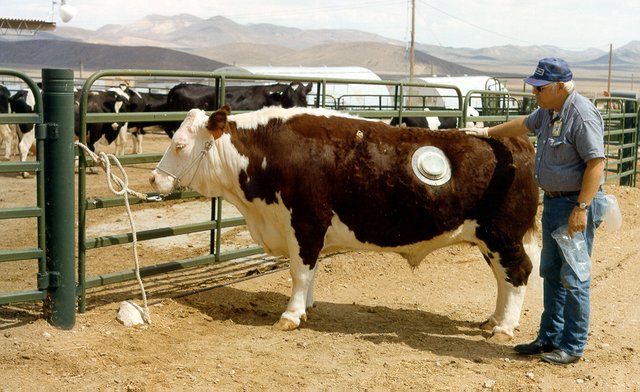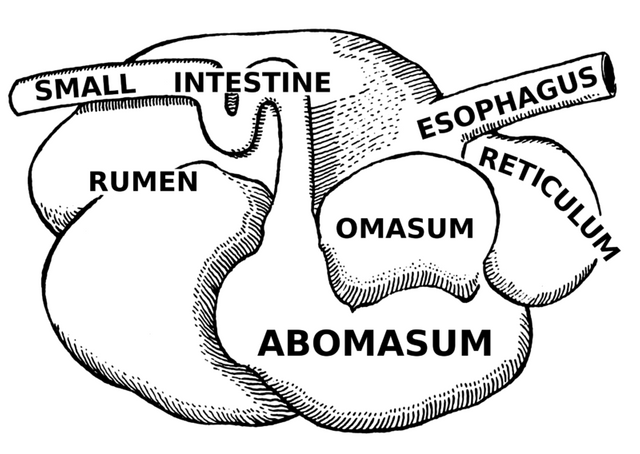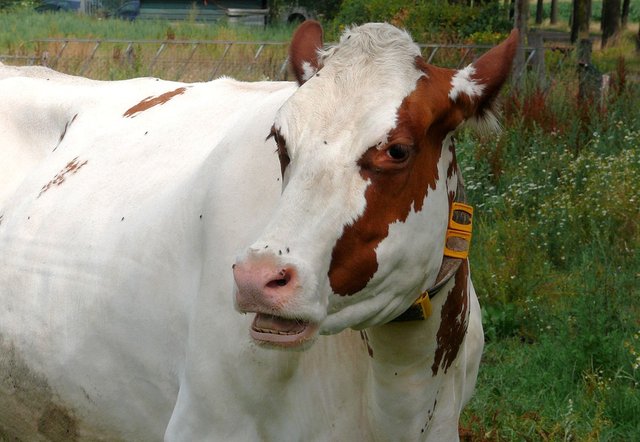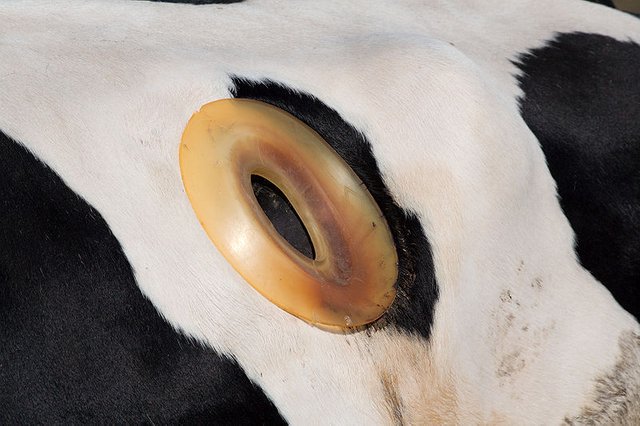DIGESTIBILITY METHODS: A REVIEW OF IN VITRO, IN VIVO AND IN SACCO
Welcome, Dear Steemian to today’s episode. I appreciate your kind words and corrections on previous posts; they made me become better towards my research works and daily activities. Common, I wouldn’t be here without you, I’m sure to impact you more on AGRICULTURE.
Everyone loves palatable foods but no matter how good or pleasant the food is, it requires acceptability. You love what you eat, don’t you? Just like that, farm animals love what they eat and you can alter what they accept whether palatable or not.
Palatability can be defined as the relish or joy to which an animal consumes a forage plant. They can be termed as factors which allow a feed to be attractive to an animal. Palatable feed or forage are succulent parts of the grass or legume which the animal enjoys.
Palatable in this context is like the way you cherish your favourite dish.
But, Acceptability is the attractiveness of feed to the animal based on the forage plant and the environment in which it was presented. Majorly, if an animal is presented with dry, tasteless and itchy grass; everything being equal it is not palatable for consumption but can be made acceptable for the animal.
How?
If a sweetener such as urea or molasses is added to the dry, tasteless and itchy grass; the animal accepts the feed despite the woes.
Let’s explain on the basis of man:
Palatability is when you’re presented with your favourite dish in a serene environment; of course you’d savour its consumption but Acceptability is presenting man with his favourite dish in a hostile environment; he’d definitely reject it. I hope you get that already?
Another explanation of acceptability
Assuming an animal is fed with succulent, nutritious forage in a smelly environment though it is palatable, the animal tends to reject the feed but if the smelly environment was removed, the animal consumes the feed
Or
If an animal is fed with dry itchy grass with good sweeteners and a perfect environment, it accepts it totally.
Therefore, a palatable food can be made acceptable and vice versa because Acceptability is key.
There are several natural factors that affect acceptability, they include Plant structure which means the leaf length and structure may hinder accessibility to the leaf; Thorns and spines on the plant; Hardness of leaf, presence of hair and other resisting properties; Secondary metabolites which includes tannins, alkaloids, saponins and so on which binds the nutrient properties in the forage and finally, plant environment which is important due to presence of noxious weeds which surrounds the plant.
We all take in food, don’t we? It is important as it affects the feeding value of and determines the animal’s performance. It is voluntary as the animal gets excess of feed or forage plant and can easily select the palatable ones provided it is highly acceptable. Intake is controlled by reflexes and this decides how much food is consumed.
Let’s take a quick look at the animal’s stomach structure.
A Ruminant animal (Cattle, Sheep and goat) is an herbivorous animal with stomach is divided into four compartments namely Rumen which is the largest of all and is the site that allows cud-chewing i.e. regurgitation (re chewing and re swallowing). It also houses the microbial population which acts of food material. The Reticulum (Sákí in Nigeria) is comb-like and it is attached to the Rumen via rumino-reticulum. The Omasum also known as many piles, absorbs water, volatile fatty acids and houses dry feed; while the Abomasum is the true stomach with digestive enzymes it uses in breaking down feed. They all determine the rate of food intake in the animals; though the cell wall component and the cell contents of the forage determine the intake level.This is the amount of available nutrients in a feed or forage which is accessible or available to the animal’s body. The digestibility rate is based on how fast the intake level is and also the palatability of a forage plant. Adequate digestibility accounts for faster growth and a well developed reproductive performance with good metabolic actions; farm animals tend to relish feeding and as fast as possible they are available for market.
The term Apparent Digestibility can be deduced from the nutrient in the faeces as compared to that in the forage consumed minus losses in metabolic wastes while True Digestibility is used for computing endogenous nutrients in the faeces.
Digestibility = Nutrients in forage – Nutrient in faeces
Won’t you rather be interested in knowing the amount of nutrients available in each bowl you consumed? These methods are proven in farm animals though, but not man. If your cattle feeds well on quality pasture or you’d like to establish a cultivated pasture of a certain species, carrying out digestibility test is essential in knowing the effects of the plant and it’s correlation on the growth of the animal. Certain factors like Secondary metabolites hinder the release of available nutrients in a forage plant; so carrying out a digestibility test or research is very important.
They include Conventional method of digestibility also known as In vivo which takes place in the animal body. This method involves the use of farm animals situated within a confined area or farm. They feed and relate accordingly just like other farm animals but the trial is calculated with the use of a marker. It can prove insignificant if faeces of the animal can’t be collected.
Procedure begins with collection of about 5 samples of different faeces from the animal then mix them homogenously; sample of the forage consumed is also collected from the field; Calculation is done using regression analysis of the differences between the faeces and the forage consumed as outlined by Van Soest in 1967. The percentage difference is determined in the laboratory carrying out tests on Crude protein content, crude fibre, minerals and vitamins and many more.
Digestibility = f (faecal index); faecal index is calculated by Nitrogen and lignin contents of faeces
So, basically it’s like the normal rearing of animals except that they are confined to a specific routine and are placed under voluntary intake with samples of their forage taken and their faeces placed under laboratory analysis to determine the remaining contents within. Disadvantages of this method are that they are expensive, time consuming and cannot be used for large analysis of forage samples.
Just like the name implies, they are carried out using a bag and also requires an animal. Dry forage samples are kept in the bags with little pores and it is inserted into the rumen of a fistulated animal. The forage isn’t consumed by the animal through conventional means i.e. chewing but inserted directly through a punctured hole by the side of the animal (directly into its rumen) where it is acted upon by microbial population in the rumen.
After a specified duration, when the bag is removed it is easier to calculate the fermentation rate of the forage and the amount of dry matter lost. Based on variations in experimental procedure and purchase of a constant pore size for the bags, there are differences in results gotten and the animal depends only the on the forage fed to them during the experiments. This experiment however does not disturb normal activities of the animal which includes feeding.
Based on evolution and discovery, artificial methods were deduced mimicking the rumen of the animal and the lower gut. It is done with rumen fluids and chemical fermenter and can be done for a large sample at a time. Tilley and Terry described the mehod in 1963 and the correlation with the conventional method is about 97percent.
Y=16.4205+0.7892x –Barnes (1973). Where; Y= in vivo digestibility value and X= in vitro digestibility value


The rumen fluids are purchased at an abattoir or from a rumen fistulated animal with a buffer for saliva stimulation; then the fluid is mixed with the feed in a fistula and the mixture is placed in an incubator and heated at room temperature (39°C) for up to 48 hours where it is digested by acid pepsin and the residual part are discarded as indigestible parts. The chemical ferments the feed and helps in metabolism (breakdown).
In vitro on this side of the world, Nigeria as a case study has proved fast and accurate in producing multiple results and data. It is cheap and requires no animal host unlike other methods but the major constraint is availability of stable power source except the use of generator as a backup which might in turn be costly.
This is the key to all the digestibility method explained above. Feed or forage has varying amounts of nutrients locked within them. Though, low quality forage needs to be avoided but they can be covered up for in other areas. The Dry Matter (DM) is a straightforward assessment, as the name implies. It is the dry, non-moisture part of a forage /feed and the total amount of moisture in a feed us 100 percent and the moisture content in each feed (wet) is up to 80 to 90 percent i.e. 10 - 20% dry matter but ideally, a dried feed should have less than 15% moisture. Determining dry matter is simple as the forage is weighed (initial weight) when harvested, then it undergoes heat for up to 2 days (48hours or more) until it has a constant weight. The forage type, moisture content and heat availability determines the time frame.
DM % = dry weight / total weight X 100
%Moisture content = 100 - DM%
The higher the moisture content, the more the nutrients embedded in forage
Fibre is divided into Neutral Detergent Fibre which contains Cellulose, Hemicellulose and Lignin and they increase as the plant grows and thus higher DM contents. The NDF has to be ≤40% to be palatable; and the Acid Detergent Fiber which contains Cellulose and lignin and is used to analyze the energy content.
Crude protein is used in analyzing protein content in a feed or forage but the actual protein can only be estimated through the Nitrogen contents then the value is multiplied by 6.25; it is divided into True protein (available to animal) and Non Protein Nitrogen (unavailable).
Energy content is also an important parameter and I'd carried out in the laboratory like NDF, ADF, Nitrogen contents, EE and so on;it also used in measuring chemical properties of a forage; while Ether Extract are soluble compounds used in determining the lipid quantity (fat) in a feed component while it's placed in ether. This process is carried out in the laboratory with the forage material burnt to ash while the test is carried out. The sample is further used in estimating the Mineral content of the feed using atomic absorption spectroscopy where macro and micro minerals are determined.
Just like that, don’t you think? I love chocolate, it’s palatable and acceptable but when I consume them I doubt they really add much; just my thought though. Calculate the nutrient composition in your stomach, pack your excreta (faeces) then calculate the nutrient left in it; then subtract the difference. But do this; only if it’s just chocolates you had all through.
To farm animals, they do love to consume certain type of grasses or legumes as long as it’s palatable and acceptable. These forages supply nutrients but more than the other due to presence of Secondary metabolites (Anti-nutritional factors) which binds the essential nutrients in the feed. So, feeding the animals with such forage will prove baseless over times as there won’t be significance in growth or reproductive activities, so what’s the point?
It has proven essential over time as it has highlighted differences in materials consumed which result in less beneficial results and those with potentials. Digestibility methods are chosen based on the mode of experiment (if the experiment is based on Organoleptic properties like taste, smell, colour, shape or many more; In vivo method is best) or location where the experiment is carried out (unavailability of light source or equipment) and many more. The researcher might decide to carry it out in situ based on known reason. Thankfully, we have science who has proven a lot of wrongs right. I hope we can deduce the nutrient effect of foods we eat too, to enlighten us more on the definition of palatability and acceptability to improve our health status.
Thank you for reading.
References
Tilley J M A and Terry R A. 1963. A two-stage technique for the in vitro digestion of forage crops Journal of the British Grassland Society 18:104-111.
Van Soest P J. 1982 Nutritional ecology of the ruminant. O and B Books Inc., Oregon, USA. 374 pp.
Prof. Olanite Jimoh Alao, Dr. O.M. Arigbede and Dr. (Mrs.) V.O.A. Ojo Forage quality and conservation; Federal University of Agriculture, Abeokuta
Forage determination
Forage determination
Don’t forget, If you write STEM (Science, Technology, Engineering, and Mathematics) related posts, consider joining #steemSTEM on steemit chat or discord . If you are from Nigeria, you may want to include the #stemng tag in your post. You can visit this blog by @stemng for more details.





This is quite knowledgeable. Nice.
Thanks.... I appreciate you stopping by
This is quite knowledgeable. Nice.
Bravo!!!
Thanks man
Great and detailed article. Thanks for sharing it with us!
Pleasure... Thanks for stopping by
Woah need to review all of this before my next meal.
This is a really wonderful post. You offer a clear, logical explanation and avoid jargon when describing technical material. I don't like the looks of the bag inserted on the side of the animal, but then I'm a fervent animal rights advocate. I had just been reading about sagebrush and how some animals find it palatable at different seasons, so this article fit right into that. I will upvote later because my voting strength is a bit depleted. But I am following you.
Thank you very much... I appreciate you stopping by and I hope to gain more insight from you being an animal right advocate. Will look forward to hearing more from you.
Digestability!i gained a lot from this piece
I'm glad...
Hi @humbledeen!
Your post was upvoted by utopian.io in cooperation with steemstem - supporting knowledge, innovation and technological advancement on the Steem Blockchain.
Contribute to Open Source with utopian.io
Learn how to contribute on our website and join the new open source economy.
Want to chat? Join the Utopian Community on Discord https://discord.gg/h52nFrV
Congratulations! This post has been upvoted from the communal account, @minnowsupport, by Humbledeen from the Minnow Support Project. It's a witness project run by aggroed, ausbitbank, teamsteem, theprophet0, someguy123, neoxian, followbtcnews, and netuoso. The goal is to help Steemit grow by supporting Minnows. Please find us at the Peace, Abundance, and Liberty Network (PALnet) Discord Channel. It's a completely public and open space to all members of the Steemit community who voluntarily choose to be there.
If you would like to delegate to the Minnow Support Project you can do so by clicking on the following links: 50SP, 100SP, 250SP, 500SP, 1000SP, 5000SP.
Be sure to leave at least 50SP undelegated on your account.